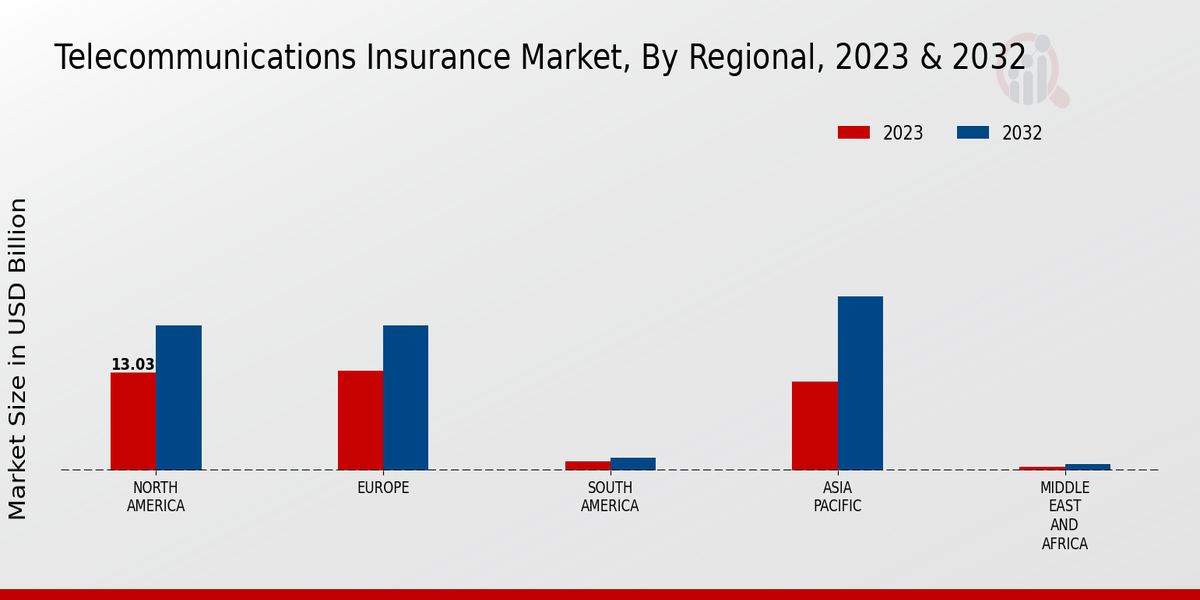Increased Competition
The Global Telecommunications Insurance Market Industry is also shaped by increased competition among telecommunications providers. As companies strive to differentiate themselves in a crowded market, they are more inclined to invest in insurance solutions that protect their assets and enhance their service offerings. This competitive landscape encourages insurers to innovate and develop comprehensive policies that cater to the unique needs of telecommunications firms. The anticipated growth of the market, projected at a CAGR of 5.53% from 2025 to 2035, suggests that as competition intensifies, the demand for specialized insurance products will likely rise, further driving market expansion.
Technological Advancements
Technological advancements in telecommunications are significantly influencing the Global Telecommunications Insurance Market Industry. The rapid evolution of technologies such as 5G, IoT, and cloud computing introduces new risks that necessitate specialized insurance products. As companies invest in these technologies, they seek insurance solutions that address potential liabilities associated with system failures and service interruptions. The market is expected to grow to 80.2 USD Billion by 2035, driven by the increasing complexity of telecommunications infrastructures. Insurers are likely to develop tailored policies that align with emerging technologies, ensuring comprehensive coverage for businesses navigating this dynamic landscape.
Rising Cybersecurity Threats
The Global Telecommunications Insurance Market Industry is increasingly driven by the rising threats of cyberattacks. As telecommunications companies face sophisticated cyber threats, the need for insurance coverage to mitigate potential financial losses becomes paramount. In 2024, the market is valued at 44.3 USD Billion, reflecting the urgency for robust cybersecurity measures. Insurers are adapting their policies to cover data breaches, ransomware attacks, and other cyber incidents, which are projected to escalate in frequency and severity. This trend indicates a growing recognition of the financial implications of cyber risks, thereby propelling the demand for telecommunications insurance.
Regulatory Compliance Requirements
Regulatory compliance is a critical driver for the Global Telecommunications Insurance Market Industry. Telecommunications companies are subject to stringent regulations regarding data protection, privacy, and service reliability. Non-compliance can lead to substantial fines and reputational damage, prompting firms to seek insurance coverage that safeguards against these risks. As regulations evolve, the demand for insurance products that address compliance-related liabilities is expected to rise. This trend is likely to contribute to the market's growth, as companies prioritize risk management strategies that align with regulatory frameworks, ensuring they remain compliant while protecting their financial interests.
Global Expansion of Telecommunications Services
The global expansion of telecommunications services is a significant factor propelling the Global Telecommunications Insurance Market Industry. As companies extend their operations into emerging markets, they encounter diverse risks that necessitate tailored insurance solutions. This expansion often involves navigating complex regulatory environments and varying market conditions, which can expose firms to unique liabilities. The market's growth trajectory, with a valuation of 44.3 USD Billion in 2024, indicates a robust demand for insurance products that address these challenges. Insurers are likely to adapt their offerings to meet the needs of businesses operating in diverse geographical landscapes, ensuring comprehensive coverage.





















Leave a Comment